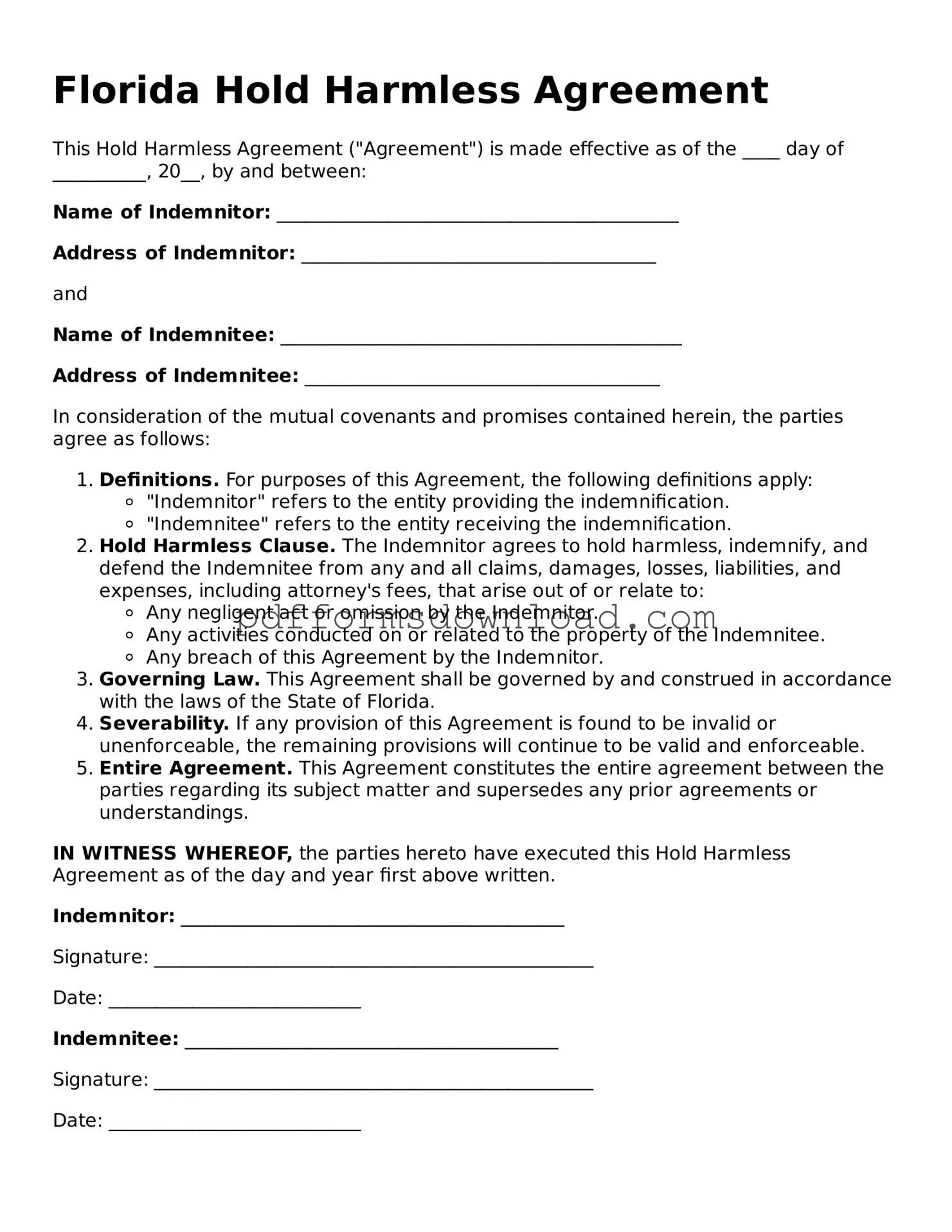What is a Florida Hold Harmless Agreement?
A Florida Hold Harmless Agreement is a legal document that protects one party from liability for certain risks or damages that may arise during a specific activity or event. It essentially means that one party agrees not to hold the other party responsible for any losses, injuries, or damages that occur, often in situations such as events, construction projects, or rental agreements.
Who typically uses a Hold Harmless Agreement in Florida?
This type of agreement is commonly used by businesses, event organizers, property owners, and contractors. For instance, if a venue is rented for an event, the venue owner may require the event organizer to sign a Hold Harmless Agreement to protect against potential claims arising from accidents during the event.
What are the key components of a Hold Harmless Agreement?
A typical Hold Harmless Agreement includes several important elements: the names of the parties involved, a clear description of the activity or event, the specific liabilities being waived, and the signatures of all parties. It may also outline any insurance requirements and the duration of the agreement.
Is a Hold Harmless Agreement enforceable in Florida?
Yes, Hold Harmless Agreements are generally enforceable in Florida, provided they are clearly written and do not violate public policy. Courts typically uphold these agreements unless they are deemed overly broad or unfairly disadvantageous to one party.
Can a Hold Harmless Agreement protect against gross negligence?
Generally, a Hold Harmless Agreement cannot protect a party from liability arising from gross negligence or willful misconduct. Courts may refuse to enforce such agreements if they attempt to waive liability for serious wrongdoing, as this goes against public policy.
How does a Hold Harmless Agreement differ from liability insurance?
A Hold Harmless Agreement shifts the responsibility for liability from one party to another, while liability insurance provides financial coverage in the event of a claim. While both serve to mitigate risk, they operate differently. An agreement transfers liability, while insurance offers protection against potential costs.
Do I need a lawyer to draft a Hold Harmless Agreement?
While it is possible to create a Hold Harmless Agreement without legal assistance, consulting a lawyer is advisable. A legal professional can ensure that the agreement is properly structured, complies with state laws, and adequately protects your interests.
Can I modify a Hold Harmless Agreement after it has been signed?
Modifications to a Hold Harmless Agreement can be made, but they must be documented in writing and signed by all parties involved. Verbal changes are typically not enforceable, so it's essential to keep all modifications clear and formalized.
What should I do if I am asked to sign a Hold Harmless Agreement?
If you are asked to sign a Hold Harmless Agreement, take the time to read it carefully. Consider the risks involved and whether you are comfortable accepting them. If you have any concerns, consult with a legal professional before signing to ensure you fully understand your rights and obligations.
